Lung Cancer Awareness Month: 7 Reasons Screening is Underused
Lung cancer is by far the deadliest cancer, representing nearly a quarter of all cancer deaths. However, there is good news: The incidence of lung cancer and…
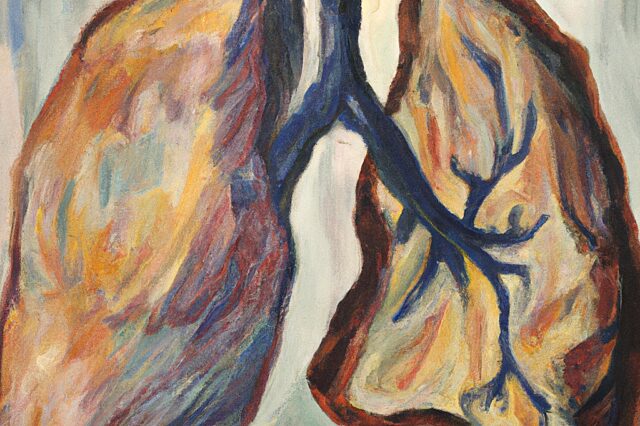
Update your location to show providers, locations, and services closest to you.

UF Health Shands Hospital is rated by U.S. News & World Report as one of the nation's top hospitals for treating COPD.
Chronic obstructive pulmonary disease (COPD) is a common lung disease. Having COPD makes it hard to breathe.
There are two main forms of COPD:
Most people with COPD have a combination of both conditions.
COPD; Chronic obstructive airways disease; Chronic obstructive lung disease; Chronic bronchitis; Emphysema; Bronchitis - chronic
Smoking is the main cause of COPD. The more a person smokes, the more likely that person will develop COPD. But some people smoke for years and never get COPD.
If a person has a rare condition in which they lack a protein called alpha-1 antitrypsin, they can develop emphysema even without smoking.
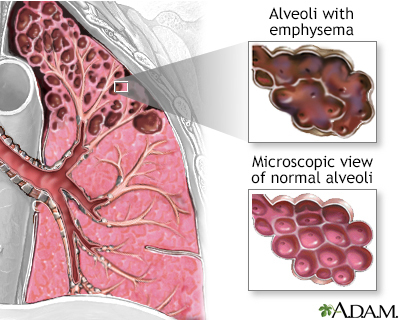
Other risk factors for COPD are:
Symptoms may include any of the following:
Because the symptoms develop slowly, many people may not know that they have COPD.
The best test for COPD is a lung function test called spirometry. This involves blowing out as hard as possible into a small machine that tests lung capacity. The results can be checked right away.

Using a stethoscope to listen to the lungs can also be helpful, showing prolonged expiratory time or wheezing. But sometimes, the lungs sound normal, even when a person has COPD.
Imaging tests of the lungs, such as x-rays and CT scans may be ordered. With an x-ray, the lungs may look normal, even when a person has COPD. A CT scan will almost always show signs of COPD if it is present.
Sometimes, a blood test called arterial blood gas may be done to measure the amounts of oxygen and carbon dioxide in the blood.
If your health care provider suspects you have alpha-1 antitrypsin deficiency, a blood test will likely be ordered to detect this condition.
There is no cure for COPD. But there are many things you can do to relieve symptoms and keep the disease from getting worse.
If you smoke, now is the time to quit. This is the best way to slow lung damage.
Medicines used to treat COPD include:
In severe cases or during flare-ups, you may need to receive:
Your provider may prescribe antibiotics during symptom flare-ups, because an infection can make COPD worse.
You may need oxygen therapy at home if you have a low level of oxygen in your blood.
Pulmonary rehabilitation does not cure COPD. But it can teach you more about the disease, train you to breathe in a different way so you can stay active and feel better, and keep you functioning at the highest level possible.
LIVING WITH COPD
You can do things every day to keep COPD from getting worse, protect your lungs, and stay healthy.
Walk to build up strength:
Things you can do to make it easier for yourself around the home include:
Eat healthy foods, including fish, poultry, and lean meat, as well as fruits and vegetables. If it is hard to keep your weight up, talk to a provider or dietitian about eating foods with more calories.
Surgery or other interventions may be used to treat COPD. Only a few people benefit from these surgical treatments:
You can ease the stress of illness by joining a support group. Sharing with others who have common experiences and problems can help you not feel alone.
COPD is a long-term (chronic) illness. The disease will get worse more quickly if you do not stop smoking.
If you have severe COPD, you will be short of breath with most activities. You may be admitted to the hospital more often.
Talk with your provider about breathing machines and end-of-life care as the disease progresses.
With COPD, you may have other health problems such as:
Go to the emergency room or call 911 or the local emergency number if you have a rapid increase in shortness of breath.
Not smoking prevents most COPD. Ask your provider about quit-smoking programs. Medicines are also available to help you stop smoking.


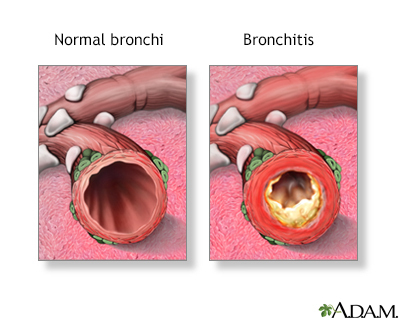
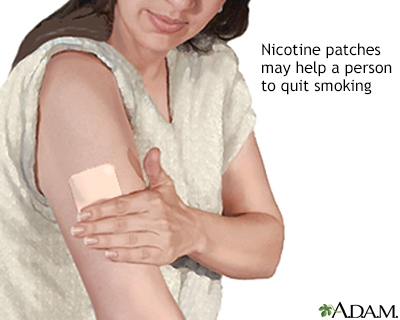
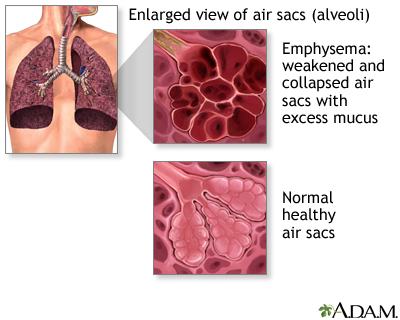

Global Initiative for Chronic Obstructive Lung Disease (GOLD) website. Global Initiative for Chronic Obstructive Lung Disease: 2023 Report. goldcopd.org/2023-gold-report-2/. Accessed January 6, 2023.
Han MK, Lazarus SC. COPD: diagnosis and management. In: Broaddus VC, Ernst JD, King TE, et al, eds. Murray and Nadel's Textbook of Respiratory Medicine. 7th ed. Philadelphia, PA: Elsevier; 2022:chap 64.
National Institutes of Health, National Heart, Lung, and Blood Institute website. COPD national action plan. www.nhlbi.nih.gov/sites/default/files/media/docs/COPD%20National%20Action%20Plan%20508_0.pdf. Updated February 2021. Accessed July 13, 2022.
Rochester CL, Nici L. Pulmonary rehabilitation. In: Broaddus VC, Ernst JD, King TE, et al, eds. Murray and Nadel's Textbook of Respiratory Medicine. 7th ed. Philadelphia, PA: Elsevier; 2022:chap 139.
Lung cancer is by far the deadliest cancer, representing nearly a quarter of all cancer deaths. However, there is good news: The incidence of lung cancer and…

This November, UF Health recognizes chronic obstructive pulmonary disease, or COPD, to spread awareness about the importance of understanding this disease.…
